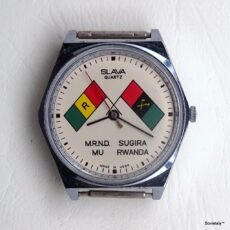Introduction
Polar Aviation, also known as Polyarnaya Aviatsiya, was a crucial division of Aeroflot, the Soviet Union’s national airline. Founded in 1931, Polar Aviation was tasked with managing flights and rescue operations in the polar regions, both in the Arctic and Antarctic. This division played a significant role in developing polar air routes and providing logistical support for scientific expeditions.
History and Foundation
Polar Aviation was established in 1931 under the direction of the Main Directorate of the North Seaside Path (Upravlenie Severnogo Morskogo Puti – SMP), later renamed Glavnoye Upravlenie Severnogo Morskogo Puti (GUSMP). The main goal of this directorate was the development of the vast northern and eastern territories of the Soviet Union. In January 1960, the directorate was subordinated to Aeroflot and renamed Glavnoye Upravlenie Grazhdanskogo Vozdushnogo Flota (Main Directorate of the Aerial Civil Fleet). Finally, in 1970, the Polar Aviation directorate was discontinued and fully integrated into Aeroflot.
Logos of Polar Aviation and Aeroflot
The logos of Soviet Aeroflot and Soviet Polar Aviation were different and reflected the various operations and missions within the company.
Soviet Aeroflot Logo: The Soviet Aeroflot logo was known for its inclusion of a wing and crossed hammer and sickle. This symbol represented the civil aviation of the Soviet Union and its connection to communist ideology. The design was simple but distinctive, with stylised elements representing both flight and the socialist industry.
Soviet Polar Aviation Logo: The Soviet Polar Aviation logo, which was a specialised division of Aeroflot dedicated to flights in the Arctic regions, was different. Although less well-known than Aeroflot’s main logo, it included elements representing the Arctic environment and the extreme conditions in which it operated. This could include stylised images of polar bears, ice, or other representations of polar regions.
While both were part of Aeroflot’s vast system, the logos served to distinguish the different operations within the airline.
Operational Bases
The main operational bases of Polar Aviation included:
- Cape Severny (Chukchi Peninsula)
- Cape Chelyuskin
- Franz Josef Land
These bases were crucial for organising and maintaining regular flights in the Arctic regions. Their strategic location allowed for systematic exploration of the ice and logistical support for scientific expeditions.
Famous Pilots
Numerous heroic pilots served in Polar Aviation, including:
- Ilya Mazuruk: Commander of a modified Tupolev TB-3, famous for the rescue mission of the North Pole-1 station in 1937. He was decorated as a Hero of the Soviet Union for his contributions.
- Mikhail Vodopyanov: Participated in the rescue mission of the Chelyuskin expedition in 1934.
- Sigismund Levanevsky: Pilot of numerous polar flights, including the tragic flight of “USSR H-209”, which disappeared without a trace.
- Valery Chkalov and Mikhail Gromov: Known for their record non-stop flights across the North Pole to the United States in 1937.
Aircraft Modifications
The aircraft used by Polar Aviation were often modified to adapt to the extreme polar conditions. Some of the main aircraft and their modifications included:
- Tupolev TB-3: Modified to transport materials and personnel in extreme conditions. Used by Ilya Mazuruk during the North Pole-1 mission.
- Antonov An-2: Used in Antarctic expeditions, the first landing in Antarctica was made by this aircraft during the first Soviet Antarctic expedition in 1956.
- Dornier Do J Wal: Used for flights along the Northern Sea Route, modified for landings on ice and harsh marine conditions.
Operational Routes
The main routes flown by Polar Aviation included:
- Krasnoyarsk – Dudinka – Dikson
- Tyumen – Obdorsk
- Dudinka – Yakutsk – Tiksi Bay
- Nyurba – Yakutsk
- Tura – Turukhansk
These routes were essential for connecting the most remote areas of Siberia and the Arctic, providing vital support for scientific research and rescue operations.
Significant Incidents
Operating in the polar regions carried numerous risks, and Polar Aviation faced several significant incidents over the years. Some of the most notable include:
- 1963 Incident: An Antonov An-12 crashed during a supply mission in the Arctic, resulting in the death of the entire crew.
- 1972 Incident: An Ilyushin Il-14T crashed during a rescue flight in Antarctica, with the loss of several scientists on board.
Legacy and Commemorations
Despite its closure in 1960, Polar Aviation continues to be remembered through various commemorative items, including wristwatches celebrating the division’s brave operations. These watches, often adorned with the distinctive Polar Aviation logo, are highly valued by collectors for their historical significance and unique design.
Conclusion
The Soviet Polar Aviation played a fundamental role in developing aerial operations in polar regions. Its strategic bases, heroic pilots, aircraft modifications, and operational routes enabled the division to operate in some of the planet’s most extreme conditions, significantly contributing to scientific research and rescue operations. Despite numerous incidents and operational difficulties, the division left a lasting legacy that is still celebrated today.
Sources:





